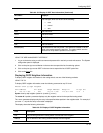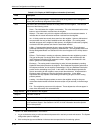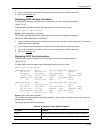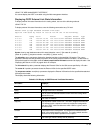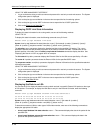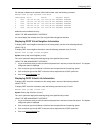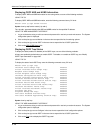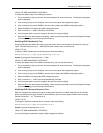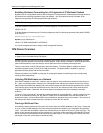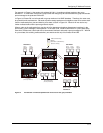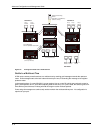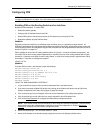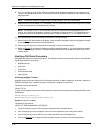
Chapter 9
Configuring IP Multicast Protocols
This chapter describes how to configure HP routing switches for Protocol Independent Multicast (PIM) and
Distance Vector Multicast Routing Protocol (DVMRP). HP routing switches support RFC 1075 for DVMRP and
PIM Dense (PIM-DM). They also support RFC 2362 for PIM Sparse (PIM-SM).
NOTE: Each of the multicast protocols uses Internet Group Membership Protocol (IGMP). IGMP is
automatically enabled on an interface when you configure PIM or DVMRP on an interface and is disabled on the
interface if you disable PIM or DVMRP on the interface.
A summary of all CLI commands discussed in this chapter can also be found in the Command Line Interface
Reference.
Overview of IP Multicasting
Multicast protocols allow a group or channel to be accessed over different networks by multiple stations (clients)
for the receipt and transmit of multicast data.
Distribution of stock quotes, video transmissions such as news services and remote classrooms, and video
conferencing are all examples of applications that use multicast routing.
HP routing switches support two different multicast routing protocols—Distance Vector Multicast Routing Protocol
(DVMRP) and Protocol-Independent Multicast (PIM) protocol along with the Internet Group Membership Protocol
(IGMP).
PIM and DVMRP are broadcast and pruning multicast protocols that deliver IP multicast datagrams. The protocols
employ reverse path lookup check and pruning to allow source-specific multicast delivery trees to reach all group
members. DVMRP and PIM build a different multicast tree for each source and destination host group.
NOTE: Both DVMRP and PIM can concurrently operate on different ports of an HP routing switch.
Multicast Terms
The following are commonly used terms in discussing multicast-capable routers. These terms are used
throughout this chapter:
Node: Refers to a router or routing switch.
Root Node: The node that initiates the tree building process. It is also the router that sends the multicast packets
down the multicast delivery tree.
9 - 1



